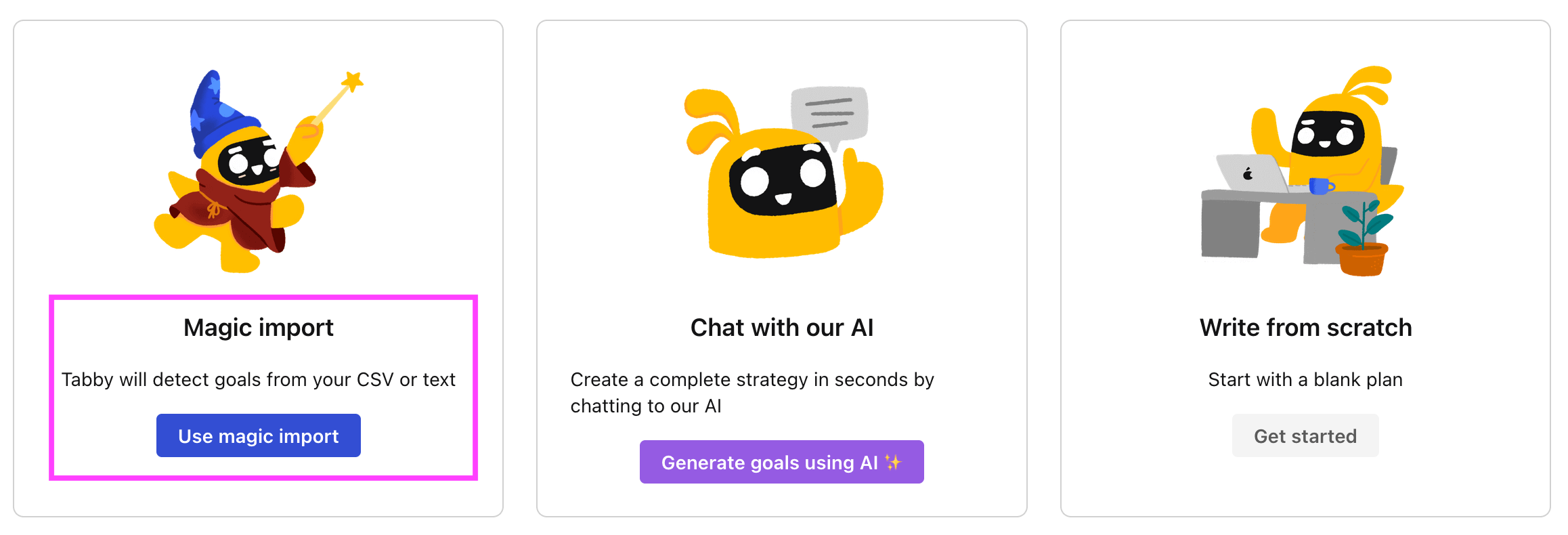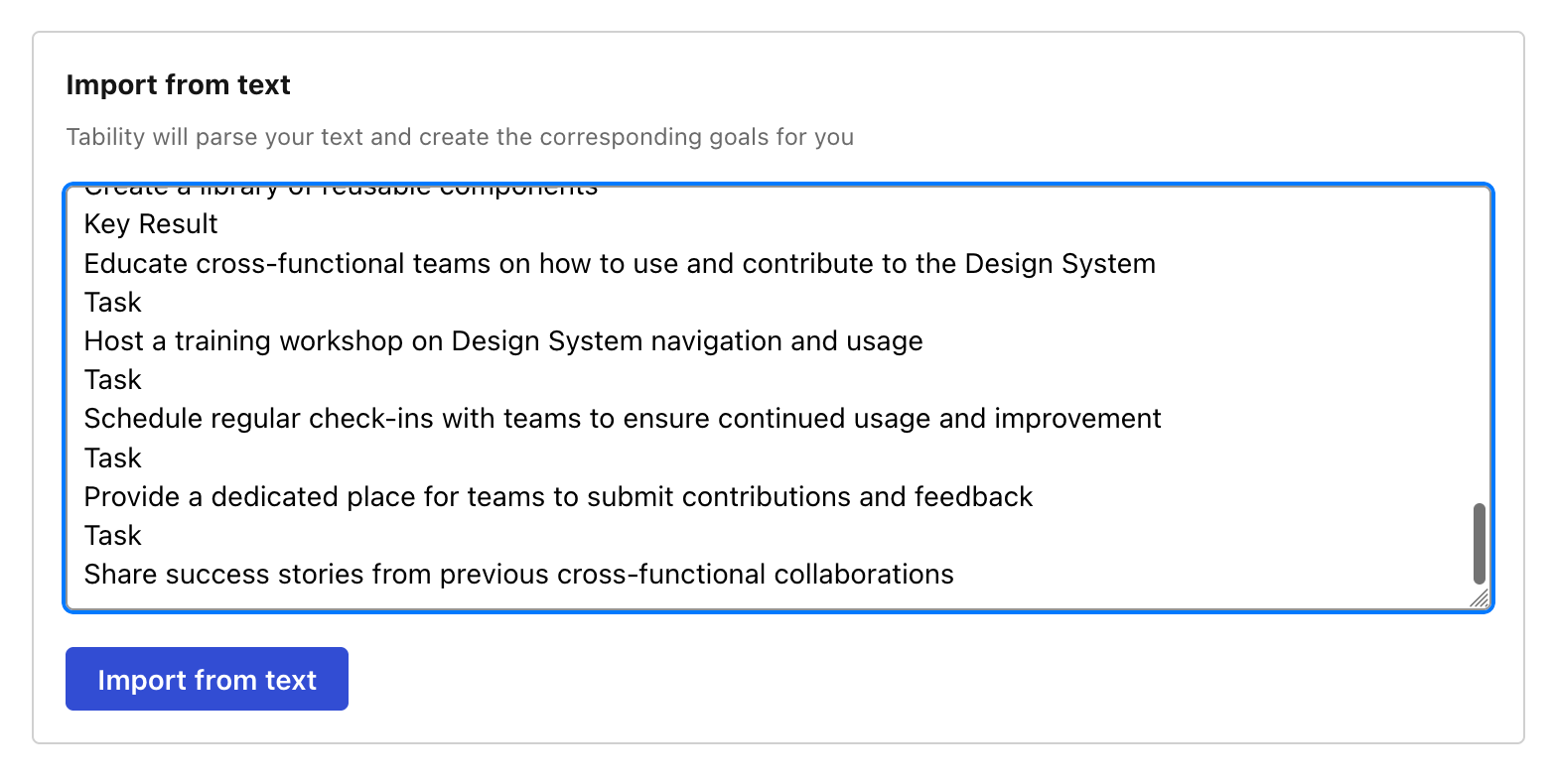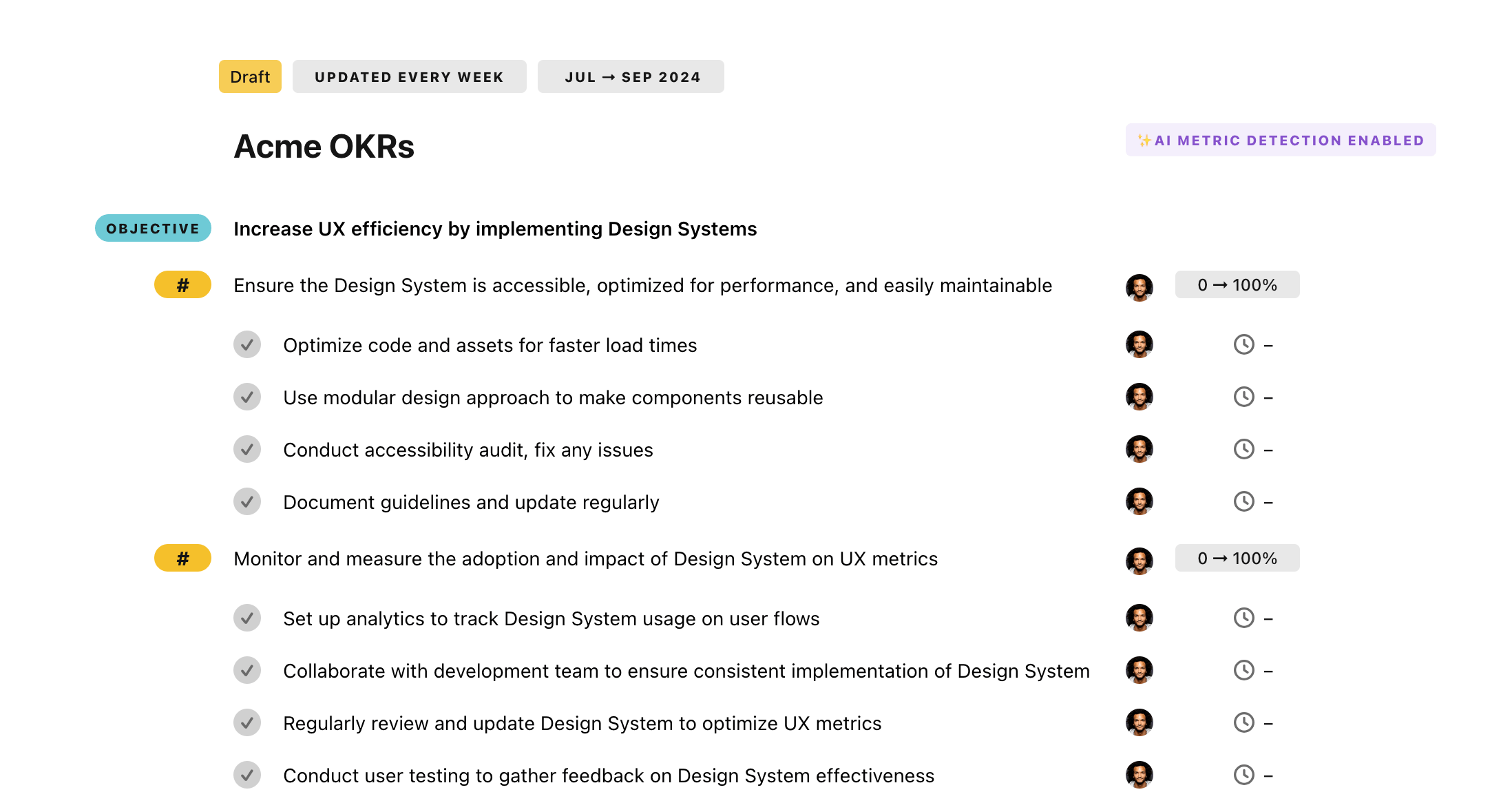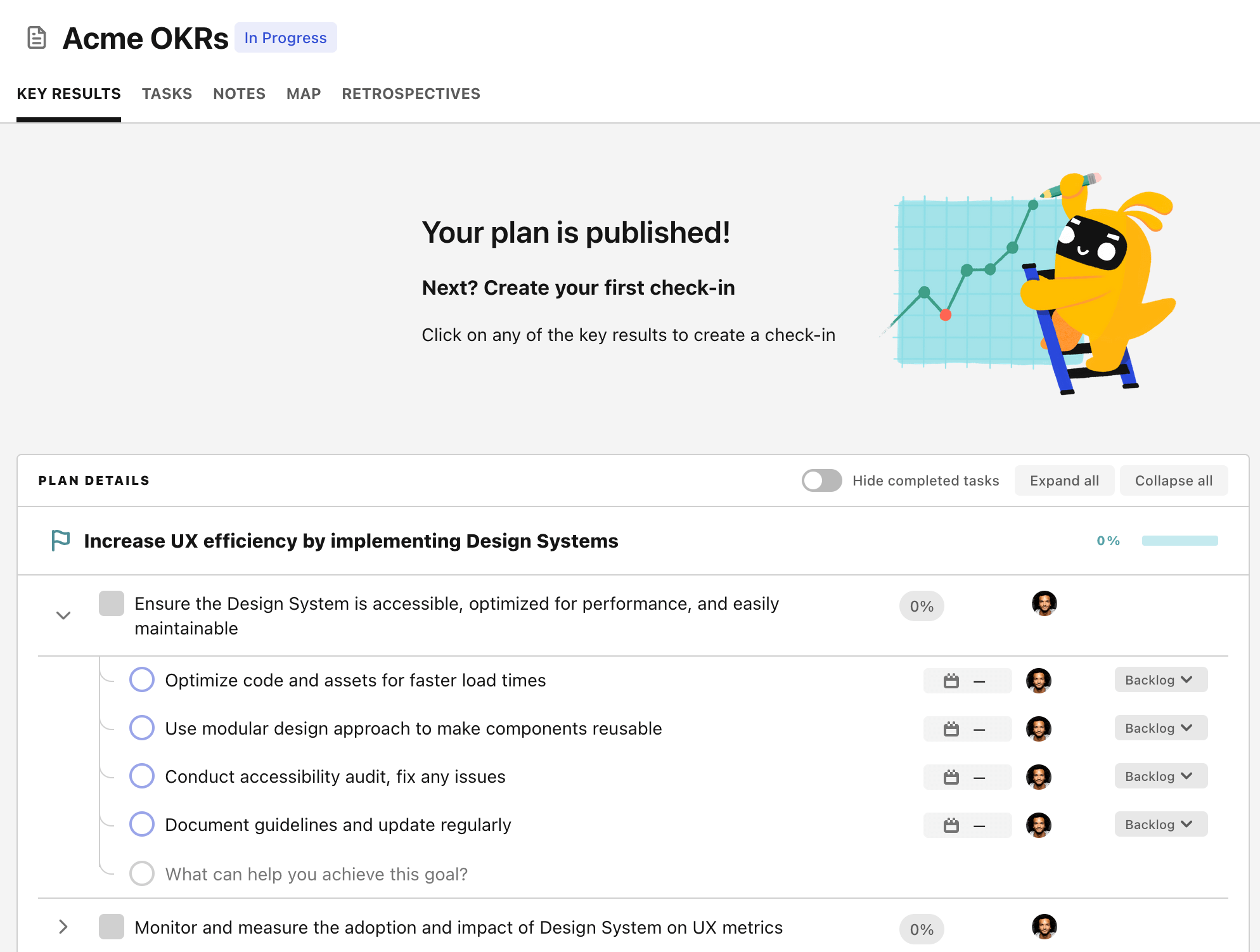OKR template to implement AI strategy for signal analysis on an interview platform
Your OKR template
Conducting comprehensive user testing is an integral part of this OKR. Its main objective is to garner positive feedback from users, ensuring the new feature meets the requirements. Initiatives involve constant improvements based on feedback and compiling user feedback for in-depth analysis.
Integration of the AI model into the interview platform is another key objective. Initiatives involved in accomplishing it include testing and rectifying any AI integration failures, developing a robust integration strategy, and understanding the AI model's capabilities thoroughly.
The final objective is to develop an AI model for signal analysis with an accuracy of more than 90%. This pertains to creating detailed requirements for the AI model, tweaking, and testing it for high accuracy and training the AI model on signal analysis data.
ObjectiveImplement AI strategy for signal analysis on an interview platform
KRComplete user testing & achieve >80% positive feedback regarding the new feature
Conduct comprehensive user testing of new feature
Improve feature based on received feedback to achieve >80% positivity
Compile users' feedback and analyze results
KRIntegrate AI model into the interview platform successfully with no errors
Test and rectify any AI integration failures or errors
Develop a robust integration strategy for the AI model
Review and understand the AI model capabilities thoroughly
KRDevelop the AI model for signal analysis with an accuracy of >90%
Define the requirements and specifications for the AI model
Test and tweak the model to achieve >90% accuracy
Develop and train the AI model on signal analysis data
How to edit and track OKRs with Tability
You'll probably want to edit the examples in this post, and Tability is the perfect tool for it.
Tability is an AI-powered platform that helps teams set better goals, monitor execution, and get help to achieve their objectives faster.
With Tability you can:
- Use AI to draft a complete set of OKRs in seconds
- Connect your OKRs and team goals to your project
- Automate reporting with integrations and built-in dashboard
Instead of having to copy the content of the OKR examples in a doc or spreadsheet, you can use Tability’s magic importer to start using any of the examples in this page.
The import process can be done in seconds, allowing you to edit OKRs directly in a platform that knows how to manage and track goals.
Step 1. Sign up for a free Tability account
Go tohttps://tability.app/signup and create your account (it's free!)
Step 2. Create a plan
Follow the steps after your onboarding to create your first plan, you should get to a page that looks like the picture below.

Step 3. Use the magic importer
Click on Use magic import to open up the Magic Import modal.
Now, go back to the OKR examples, and click on Copy on the example that you’d like to use.

Paste the content in the text import section. Don’t worry about the formatting, Tability’s AI will be able to parse it!

Now, just click on Import from text and let the magic happen.

Once your example is in the plan editor, you will be able to:
- Edit the objectives, key results, and tasks
- Click on the target 0 → 100% to set better target
- Use the tips and the AI to refine your goals
Step 4. Publish your plan
Once you’re done editing, you can publish your plan to switch to the goal-tracking mode.

From there you will have access to all the features that will help you and your team save hours with OKR reporting.
- 10+ built-in dashboards to visualise progress on your goals
- Weekly reminders, data connectors, and smart notifications
- 9 views to map OKRs to strategic projects
- Strategy map to align teams at scale